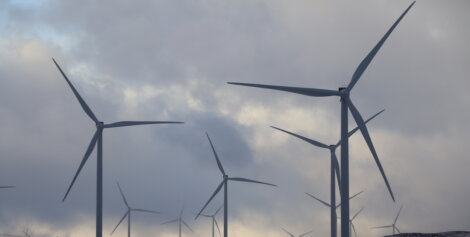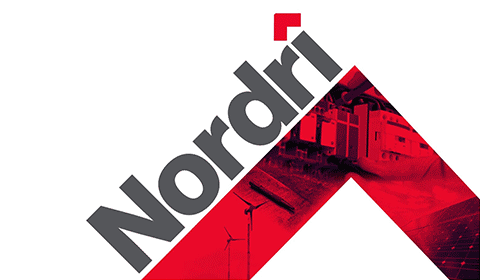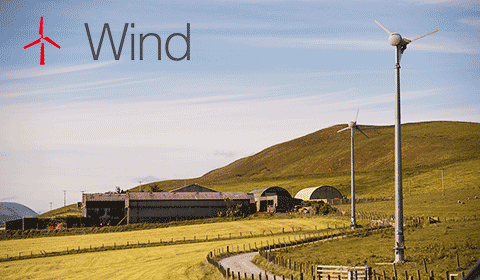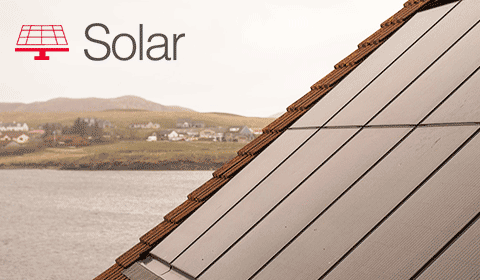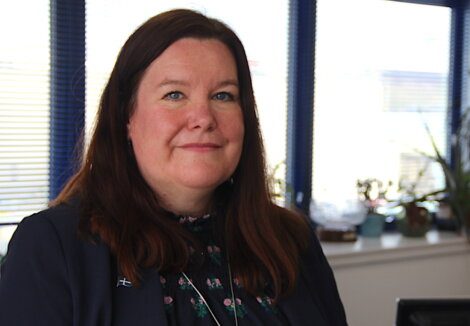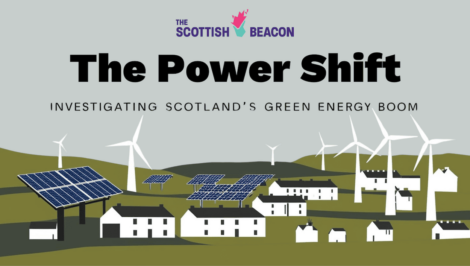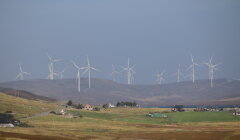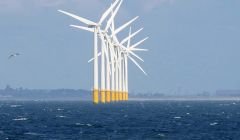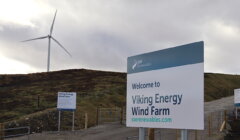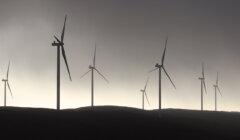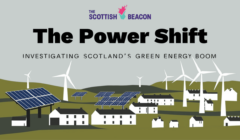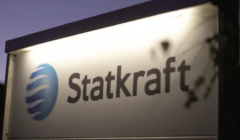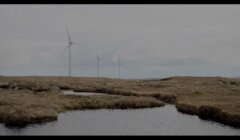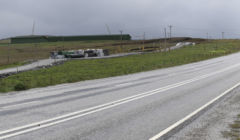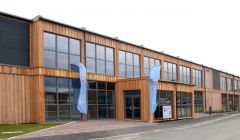Power Shift / Energy transition should include shift in ownership from ‘corporations to communities’, councillor says
A COUNCILLOR believes there should be a block on further development of “corporate-owned” wind farms in Shetland – with the focus instead on community-led projects.
Green councillor Alex Armitage said that “when communities have control of development, projects can meet the needs of local people far more effectively”.
He again highlighted the five-turbine Garth wind farm owned by the North Yell Development Council (NYDC), which puts a significant sum of money back into the community.
The councillor’s views come after delegations from the Labour-led GB Energy scheme and the UK Government’s Department for Energy Security and Net Zero visited Shetland in the spring.
The first delegation featured a director of GB Energy and representatives from the National Wealth Fund and Scottish National Investment Bank, with the visitors invited by Shetland Islands Council (SIC) and the trip organised by Highlands and Islands Enterprise.
A report to councillors said that during the two-day visit in April the delegation met with a “number of prospective energy developers and the council to discuss investment opportunities for their respective funds”.
Around the same time a delegation of visitors from the UK Government’s Department for Energy Security and Net Zero came to Shetland on the invitation of SSEN to visit its 103-turbine Viking wind farm site.
They also visited Sullom Voe Terminal to learn about energy transition opportunities there, as well as meeting with the SIC, HIE and Lerwick Port Authority.
A report to councillors on the SIC’s development committee concluded: “The visit from these delegations suggests that the energy transition opportunities in Shetland are now being understood better in both Governments.”
SIC chief executive Maggie Sandison said it remains important to engage with these types of officials – particularly on trying to address the “inequity” around Shetland having high levels of fuel poverty but being a net exporter of energy.
Become a member of Shetland News
“Shetland Islands Council remains committed to the principles laid out in ‘A Fair Share for Shetland’, and doing all it can to ensure the isles benefit from any new renewable developments in our area,” she said.
“It has been positive to have these delegations in Shetland and, moving ahead, the council will continue to engage with UK Government, Ofgem, the National Energy System Operator and industry, exploring how we can collectively try to address the inequity that the most profitable place for wind energy has the highest fuel poverty in the country.”
Sandison wrote to GB Energy director Tim Cullen in February inviting him and other representatives to Shetland so they could see the “prospects for energy transition in the remotest and windiest part of the UK”.
The letter, which was obtained through freedom of information, noted Shetland’s history in the oil and gas sector but said the switch to wind generated energy is “advancing at pace” – including onshore and offshore.
It comes against a backdrop of continued activity in the energy sector in Shetland; the controversial Viking wind farm launched in the Central Mainland last year, while Statkraft is planning three smaller onshore projects as well as a large hydrogen facility at Scatsta.
Also in the North Mainland Shetland Aerogenerators is proposing a ten-turbine energy park including battery storage too, with the aim of bringing “maximum possible value to the community”.
The operator of Sullom Voe Terminal is also looking at hydrogen production plus carbon capture, while two large offshore wind farms are proposed to the east of Shetland – in addition to a second subsea HVDC cable to the Scottish mainland.
Sandison also wrote in her letter to GB Energy: “There are also two significant green hydrogen derivative projects being worked up and a number of smaller scale commercial energy developments either running or being planned.
“Shetland also has many community-led projects addressing the challenge at different scales and technologies.”
Sandison said the council has set up a ‘Shetland Power System Working Group’ to investigate a development framework, power system modelling and community benefits.
A common theme in the community, however, is concern that Shetland is not getting the best deal out of energy developments – particularly as Garth can return as much as Viking’s £2.2 million a year community benefit fund despite being nearly 100 times smaller in generating capacity.
Added to this is frustration over the millions of pounds SSE Renewables has received in constraint payments from the National Energy System Operator as a means of compensation during bottleneck periods when the grid is not able to take export from the Viking wind farm.
GB Energy, a publicly owned energy company set up by Labour after the party took power of Westminster last year, says its key idea is that “British people should have a right to own and benefit from our natural resources”.
In May it opened a £4 million fund for community owned-energy projects in Scotland.
It remains unclear how exactly the Aberdeen-based GB Energy will benefit Shetland in the long run, but chairman of the local Labour branch Stephen Leask said it has “great potential for local wealth building within various energy production”.
Armitage, meanwhile, spoke up strongly for community-led development – saying the energy transition is “not just a transition from fossil fuels to renewables, it must be a transition in ownership and control, from corporations to communities”.
He said with money to be made in Shetland wind projects, “large energy corporations, with their paid lobbyists, in-house legal teams and technical staff are adept at benefiting from the current, top-down system”.
“They know exactly how to come to places like Shetland and extract as much wealth as possible,” Armitage said.
He continued by saying that community groups, such as the North Yell Development Council, “are swimming against the tide when it comes to carrying out renewable energy projects”.
“The Garth wind farm’s construction in Cullivoe was a monumental feat; we should be so grateful to NYDC for demonstrating to us that an alternative model of renewable energy development is possible.
“In my conversations with folk at NYDC, I’ve not heard any evidence of high-level strategic support from the SIC. So I find it disappointing to see the SIC using our strategic power to support corporations who want to extract more of Shetland’s natural resources for private gain.”
Armitage added that “every new large turbine that is built here by a private company for profit is done at an opportunity cost, because that turbine could be owned by a local community, with proceeds going to support the needs of local folk, as is happening in North Yell”.
“North Yell is the only community in Shetland where there is financial sustainability, in an era of increasing uncertainty and financial instability across our islands,” he continued.
“In my view therefore, it makes sense that we should block all further development of corporate-owned wind farms in Shetland, to make way for community-led development.
“When communities have control of development, projects can meet the needs of local people far more effectively – as is currently being live-streamed to us from Cullivoe.
“Shetland is currently at a fork in the road of onshore wind development. We can choose to go down the road of more Viking windfarms, or more Garth windfarms.
“Community-owned and community-led democratic development is surely the way to go.”
There have been, however, discussions around the idea of some community councils investing into Statkraft wind projects – such as Tingwall, Whiteness and Weisdale and Scalloway taking a share in the proposed Mossy Hill development on the outskirts of Lerwick.
This article is part of The Power Shift – a collaborative investigation by 10 independent, community-based publishers across Scotland, including Shetland News, exploring the impact of the green energy transition on communities. Co-ordinated by the Scottish Beacon and supported by the Tenacious Journalism Awards, the project aims to amplify local voices, facilitate cross-community learning and push for fair, transparent energy development.
Become a member of Shetland News
Shetland News is asking its readers to consider paying for membership to get additional perks:
- Removal of third-party ads;
- Bookmark posts to read later;
- Exclusive curated weekly newsletter;
- Hide membership messages;
- Comments open for discussion.
If you appreciate what we do and feel strongly about impartial local journalism, then please become a member of Shetland News by either making a single payment, or setting up a monthly, quarterly or yearly subscription.




